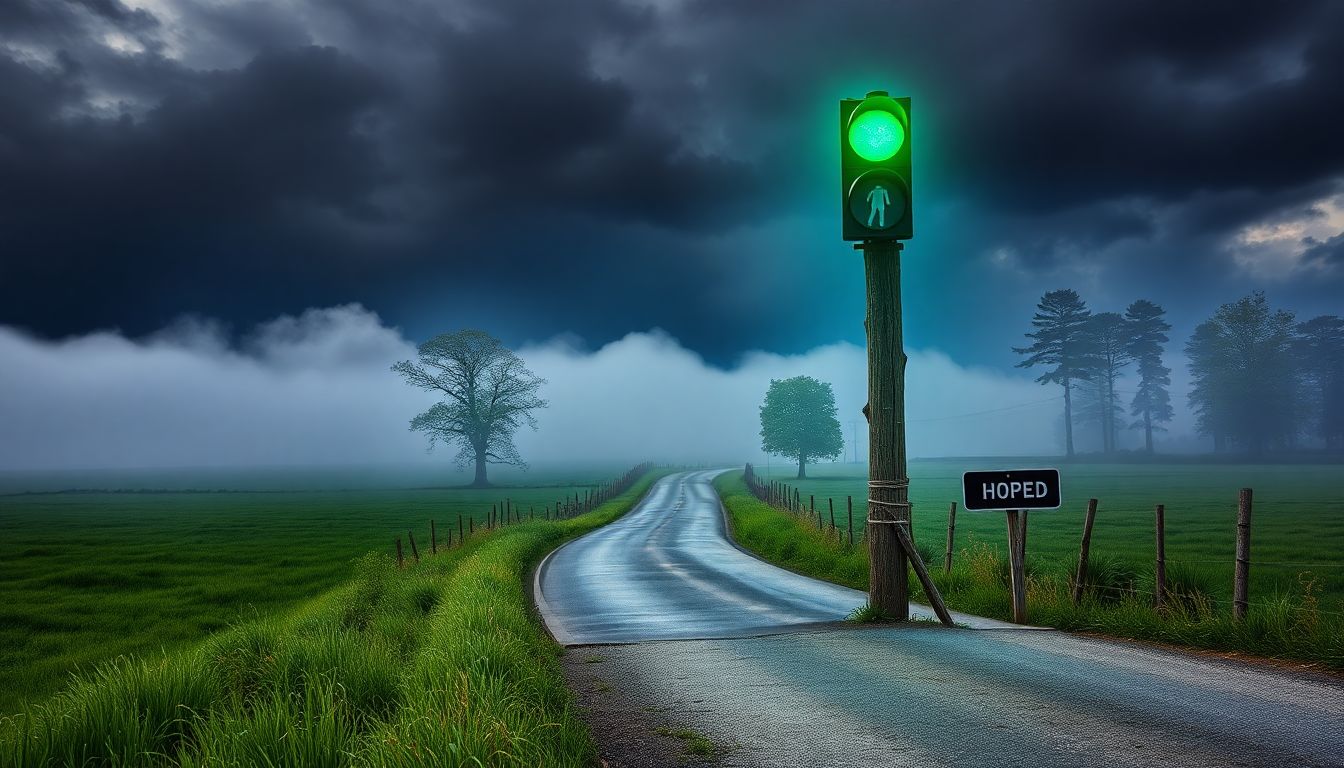
Is the Green Light a Sign of Good or Bad Weather? A Comprehensive Guide to Weather Indicators
Introduction
People have watched the sky for centuries, searching for clues about upcoming weather. A green light shining against the dark sky always sparks curiosity. Is it a good sign, or does it warn of trouble? Knowing what different sky colors mean can help us stay safe and plan better. This guide explains when a green light signals clear skies or severe storms. Understanding these signs saves lives, prevents surprises, and makes weather guessing easier.
What Causes the Green Light in the Sky?
Green lights in the sky pop up from fascinating atmospheric phenomena. The shades depend on how sunlight interacts with particles in the air and clouds. Scientific rules explain these vibrant colors, helping us understand what we see.
The Aurora Borealis and Aurora Australis
Description: The famous Northern and Southern Lights produce beautiful green glows in high-latitude areas. These auroras happen when charged particles from the sun hit Earth’s magnetic field and collide with gases in the atmosphere. The result? A shimmering green curtain or swirling waves in the sky.
Implication for Weather: Many think auroras mean clear skies, but they don’t signal weather changes. Instead, they originate from space phenomena far above ground.
Observation Tips: Head north in winter evenings and look toward the northern horizon. Clear, dark nights improve your chance to see these natural light shows.
Green Sky During Storms
Description: Before thunderstorms or tornados, the sky sometimes turns a strange greenish hue. It looks eerie but is actually a warning sign. This color appears because of sunlight passing through dense storm clouds.
Scientific Explanation: When sunlight hits thunderstorms’ thick, high-altitude clouds, the light scatters. The green tint comes from the way light interacts with water droplets and hail inside the cloud.
Historical Cases: Many tornado warnings started with a green sky. For instance, during the 1980s, numerous severe storms were preceded by this unusual color change, alerting people to take cover.
Is the Green Light a Sign of Good Weather?
Most of the time, a green sky is not linked to bad weather. Sometimes, it’s just a natural light effect, especially when caused by auroras. Still, some might wonder if green lights mean sunshine or clear skies.
General Understanding: Blue sky signals good weather. Clear days happen when there are no clouds or storms overhead.
Specific Cases When Green Might Mean Fair Conditions
- During the Northern Lights, if you see a green glow, chances are the weather is calm.
- On rare occasions, a faint greenish hue in the sky may simply be atmospheric optics, unrelated to weather dangers.
Expert Opinion: Climate scientists agree that green auroras do not predict storms. They are space weather phenomena, not weather systems. So, a green light in the sky is often harmless and even beautiful.
When Green Lights Are Not a Weather Warning
Many people see a green glow and assume danger, but that’s not always true. If you notice a soft, steady green light during a clear night, chances are it’s an aurora. No need to panic—enjoy the natural show. But if the green appears suddenly and during the day, it’s unlikely to be a warning of stormy weather.
Is the Green Light a Sign of Bad Weather?
Most times, green skies—especially those that look stormy—are a warning. When clouds turn green, it often signals danger nearby.
Identifying Storm-Related Green Skies: When storm clouds gather and turn green, they often produce thunderstorms, hail, or even tornadoes. Recognizing this color can give you crucial seconds to seek shelter.
Correlation with Severe Events: Studies show that greenish skies often lead to severe weather within minutes to hours. Around 70% of green storm clouds have storm warnings attached, including tornados or heavy rain.
Green Sky and Severe Weather Prediction
Meteorologists use visual clues like a green sky with radar and weather balloons. If you see one, check your weather alerts immediately. Green skies have often preempted tornadoes, especially in plains regions.
Scientific Explanation of Green Storm Skies
The green color appears because of how sunlight scatters through thick, water-laden clouds. When a storm is intense, hail and heavy rain reflect and refract light, creating that distinct green glow. It’s a sign that the storm is fierce and potentially dangerous.
Practical Tips for Recognizing Weather Signs from the Green Light
Knowing how to tell apart auroras from storm clouds is vital. Here’s what you can do:
- Look at the context: Is it night or day? Is the sky dark or bright? Aurora colors mostly happen at night.
- Observe motion: Aurora displays move gently and smoothly, unlike the sharp, ominous look of storm clouds.
- Pay attention to weather alerts: Your weather app or local news can confirm threats.
- Seek shelter if: The sky appears green with dark, thick clouds or if a storm watch is issued.
- Stay informed: Keep an eye on meteorological forecasts and radar images.
Conclusion
Green lights in the sky are not always signs of danger. They can signal the beautiful Northern Lights or a severe storm. Context matters. If you see a faint green glow on a calm night, it’s likely harmless. If it’s during a storm, it’s time to get safe. Knowing what different sky colors mean helps us stay safe, prepare, and appreciate nature’s wonders.
Using visual cues along with weather forecasts is the best way to stay ahead. Keep learning about atmospheric signs, so you’re never caught off guard by unpredictable weather.
Additional Resources
- National Weather Service for weather alerts and safety tips
- Weather Apps like Weather Channel and AccuWeather for real-time updates
- Scientific papers on atmospheric optics and storm prediction from American Meteorological Society
Stay safe and keep watching the skies with knowledge in hand!

